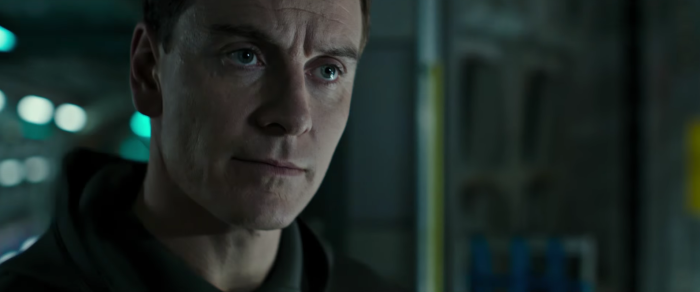Wim Wenders has been making films since he was a student in the late ’60s, and he’s still at them, in part because, more than most filmmakers, he’s been willing to adapt. Not only has he made documentaries in addition to fiction, he’s also been an early convert to video — his doc “Buena Vista Social Club,” from 2000, was one of the first all-digital features — and has been one of the precious few to use 3-D (in “Pina” and his latest film, the drama “Every Thing Will Be Fine”) for non-blockbuster reasons. The films too often involve travel, from his celebrated trilogy of road movies (“Alice in the Cities,” “Wrong Move” and “Kings of the Road,” made from 1974 to 1976) to his 1991 epic “Until the End of the World,” which hop-scotches across multiple continents. Many of these will be screened in new DCP restorations over the next month at the IFC Center. “Wim Wenders: Portraits Along the Road” is not complete, but considering how many he’s made it’s close enough. And it includes not only the heavy-hitters but rarities as his early shorts and the nearly five-hour cut of “Until the End of the World,” his madly ambitious futuristic sci-fi-noir that was originally released in a 2 ½ hour cut he’s referred to as “Reader’s Digest version.” Wenders sat down with Metro to talk about staying fresh by never feeling comfortable, the power of cinema over cities and, of course, rock and roll and pinball.
I was reading a book on New German Cinema from 1980, and it talks about you being most obsessed with rock and roll and pinball. Do you still feel that way?
1980? That’s when pinball was still relevant. They’re now only in boutiques. They’re not in bars anymore. Sometimes you find them in private homes. But they’re hard to maintain. I had a few over the years, but the problem is getting them serviced. No one knows how to do this anymore. It’s like editing tables, Steenbecks. No one knows how to repair them anymore. But I was a pinball wizard. I was the original pinball wizard. I made my living playing pinball. When I was a young student and poor, pinball was played for a round. I could drink for weeks every night without paying a single round because I was very good. I never lost at pinball. RELATED: Wim Wenders on “The Salt of the Earth” and how selfies are a “perversion of photography” Do you still have the same affinity for rock and roll? It’s hard to classify what rock and roll is these days.
I think rock and roll has remained and reinvented itself over the years, over and over again. I still listen to the old heroes. If they’re still producing I still get their records. But I’m just as interested in what new bands are doing. Rock and roll is used really interestingly in your films. There’s Kenneth Anger’s revolutionary approach in the early ’60s, which was blasting music over the images. But in your films you show people listening to pop songs — on jukeboxes in “The Goalie’s Anxiety at the Penalty Kick” and others, or that scene in “The American Friend” of Bruno Ganz listening to The Kinks as he sweeps. Did that way of using music just come to you instinctually? I think it was instinctual. One of the first movies that used rock and roll like this was “Easy Rider.” I was still a student then and I loved it. Music was a big part of what that film was about. And of course, I always felt films were very much dealing with time and the zeitgeist. Rock and roll was always part of that. It’s an ingredient. It’s still a huge part of my life, a huge creative influence. At the same time the scores in your films are also interesting. “The Goalie’s Anxiety at the Penalty Kick” has a Bernard Herrmann-esque thriller score, which would seem to fit what sounds like a thriller plot: a man evading police after a murder. But the style of the film is very much not a thriller but a portrait of existential malaise.
Somebody at the time, for lack of any other classification, called it an “existential thriller.” I didn’t coin that phrase, but I liked it. I love the language of Hitchcock movies, but I felt myself I couldn’t pretend to be telling the story in that language. But I could use some of that language to talk about another stage of estrangement or lostness. Part of the language of Hitchcock was definitely the music. On the other hand there is a lot of rock and roll, and there are all these jukeboxes. We restored the film last year and I hadn’t seen it in maybe 30 years. It was amazing how many close-ups of jukeboxes I used. There’s a sense in your films, especially when they hit the roads or visit cities or especially under-visited small towns, that you’re leaving a lot to chance — that cinema is a form of discovery for you as well. That was the rule of the game: not knowing what was happening. You can’t make a road movie with a plan. You can have intentions, but from my discovery of the genre — which was “Alice in the Cities,” up till “Until the End of the World,” which was the last real road movie I’ve done — the rule of the game was always that the only thing you would really know was the itinerary. What would happen was largely left to chance. The most radical one was “Kings of the Road,” because we only had the itinerary. I only wrote the very first scene and after that it was completely open. There was no story, there was no plot. There was an itinerary and two actors in a truck, and anything could happen. The idea was that the filmmakers, actors and the team would be involved in an adventure — that they really have to go through it themselves. That rubs off on you more than if you prepared to have an adventure, because you already knew it. It was written and planned, so you’d only have to execute it. The road movie, the way I understood it, the rule was you have to be able to surprise yourself, and not know what was going to happen the next day. It’s interesting to think of “Kings of the Road” as improvised, because it’s such a formally beautiful film. The shots are very, for a lack of a better word, precise. They look like they’ve been chosen with great purpose.
Even if you improvise a film you can still have a frame in mind and you can still be precise with those shots. And if you stop along the road because you see something that you like, you can still frame it as if you were a photographer. Sometimes people don’t believe that we improvised all of “Kings of the Road” because it looks so…solid. Even “Wings of Desire,” the look makes people think it was all planned. But nothing was planned. The shots in “Wings of Desire” tend to be complex camera movements.
But nobody knew we were going to do those till the day before. It strikes me that sometimes people think improvisation should be equivalent to chaos. It’s not. It’s not at all.
Do you feel that as your career has progressed that you’ve become better with impromptu filmmaking?
You can’t say you became better, because if you became better that would almost be a catastrophe, because that means you know how to do it and it would be a routine. I think one of the reasons I’ve been making more documentaries over the last decade is because then you can be even more up in the air about framing and not knowing how to do it, because even more than in fiction anything can happen at any given moment. I’ve always been very scared of doing things because I know how to do them. That’s always been my biggest fear, that I’m doing something just because I know how to do it. In “Alice in the Cities,” the first half is in America and the second back in Europe and mostly Germany. The American scenes feel strange and busy, but there’s a comfort to the scenes in Germany. Does that come out of you feeling more comfortable shooting at home? I think you can’t avoid that when things are closer to you. Houses and streets are more familiar. You know your way around a little better. We started “Alice in the Cities” in North Carolina. We drove down, the little crew we were, the two cars, and we didn’t know where to start the film. I said, “We’re going to drive south as much as we need to to have palm trees in our first shots.” And we found the first palm tree in North Carolina [laughs] and set up. I had never been there in my life. It’s a different thing if you shoot in a place where you’ve never been before. Maybe there’s a different freshness to where you put the camera. It’s different to put up your cameras in places you know. RELATED: Our review of Wim Wenders’ documentary “The Salt of the Earth” Did you feel a certain comfort coming home when you returned to Berlin to make “Wings of Desire” following a long stretch in America?
Not really, because I felt the absence had enabled me to see Berlin again, like a new place. I’d been away for almost 10 years. It was great to see the old country a little bit like a stranger. It was a great privilege to see it from scratch. I needed to be away for so long to have that feeling again. That’s a great city film. How do you feel shooting in cities versus in the country or in small towns or along roads?
Cinema has such a fantastic affinity for cities. It was a city culture from the beginning. Of course filmmakers took their cameras out into deserts and into foreign places, but cinema was really a city art. In a very strange way, fictional films have a bigger affinity to cities than documentaries. I could have tried to make a documentary about Berlin when I came home from America, but I was sure a fiction would do it more justice. There are not many documentaries on cities that I find really interesting. As soon as there’s a story you can enter the city better. My favorite film on San Francisco is “Vertigo,” and it’s hard to think of a more hilarious fiction than “Vertigo.” But in “Vertigo,” San Francisco is so present. I don’t think there’s a movie that would give you a better impression of San Francisco in the late ’50s. In “Kings of the Road” especially there’s an anxiety about the future of movies. The older characters there uniformly lament what they see as the passing of a medium. You yourself, however, have adapted to new technologies. Still, do you worry that movies won’t have the same pull for younger generations? It’s a different culture now. I’m teaching students who are 25, and most of them have not a clue of film history. What I knew about movies when I was that age was 100 times more. It’s a different ballgame now. They still have a love of movies, but they lack that movie buff culture. But I think movies will have no trouble surviving. The need for storytelling is so intrinsic and it’s not been diminished. It’s just going to change its shape. And it’s going to be different kinds of movies. Already, the kinds of movies I like, they are a vanishing act. The language of the movies I love is not relevant anymore. But something else came in its place, and maybe the language that I grew up with — the Antonionis and Bergmans and Fords and Ozus — that sort of language I grew up with will probably be impossible to apply today to contemporary reality. Movies are drastically changing. Technology has changed so drastically that we cannot hold onto what we loved about cinema. It’s just changing. But it will remain as a culture. “Until the End of the World” has some interesting things about not just movies but about how we may take in media — some of which has come true.
“Until the End of the World” was a conscious effort to imagine the audio-visual world to come, and some of the stuff we came up with was actually quite valid. We imagined mobile phones and we called them “video phones” — we had to invent all the words for this kind of stuff. We didn’t know the Internet was going to be out just a couple of years afterwards. I think some of it is pretty accurate. Some of it, of course, was pretty out there, like being able to watch your own dreams. But I think that’s a valid metaphor for what images would become. They’re going inward now. Everyone is self-documenting. The desire to record our dreams, which is shown in video images in the film, is only a few technological leaps away from the desire to take selfies. It’s true. Dreams are a more elaborate version of what the selfie culture is. It’s really on the way there. Not long ago I saw the first images computer translated from the human brain. It was images of birds and trees. It looked pretty much like the stuff we produced in “Until the End of the World.” Sometimes movies have a propensity to look into the future. [Laughs] “Wim Wenders: Portraits Along the Road” plays at the IFC Center from August 28 through September 24. Visit the site for the full lineup and showtimes.
Wim Wenders looks back on his movies, his days as a ‘pinball wizard’

Getty Images
Follow Matt Prigge on Twitter @mattprigge


















